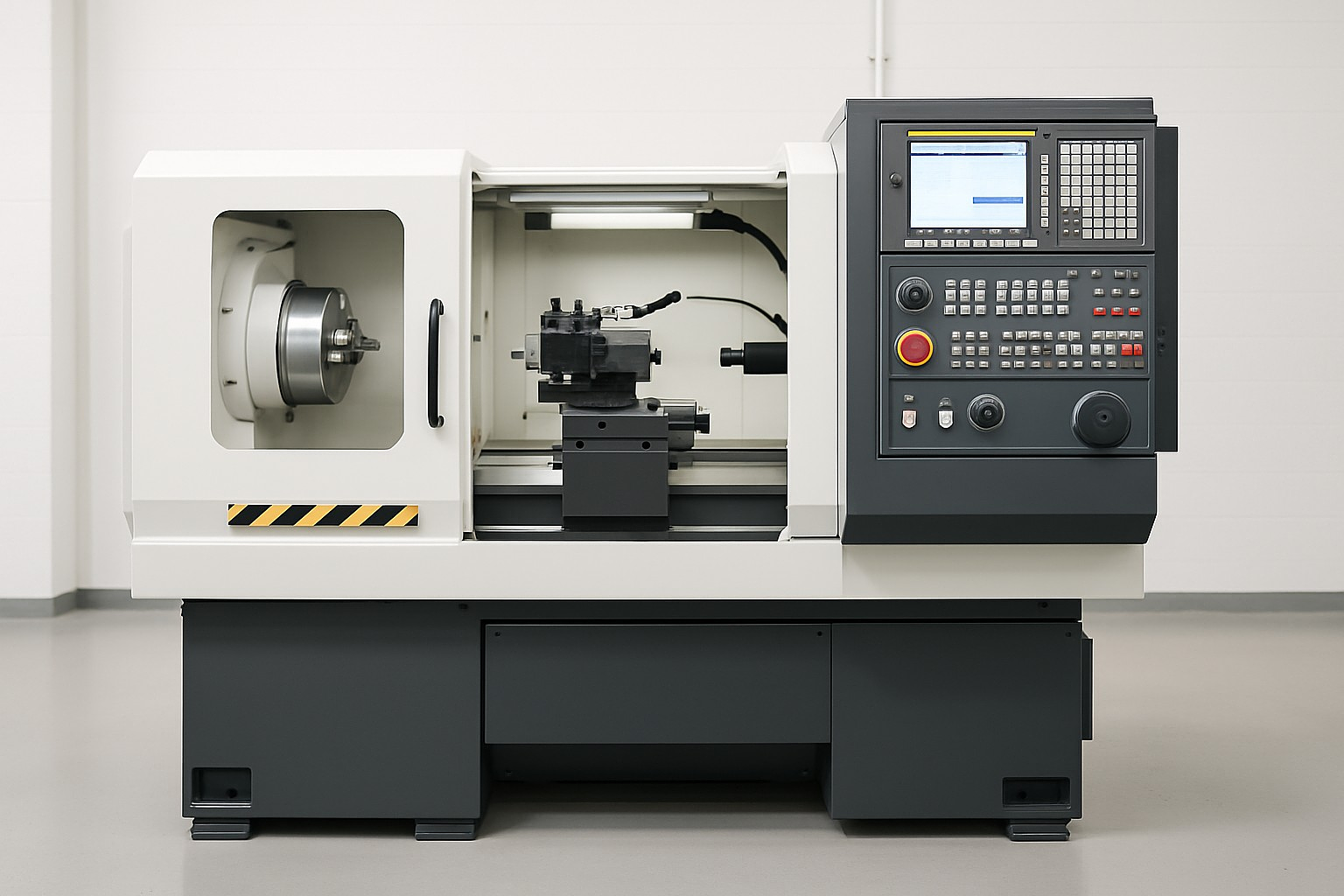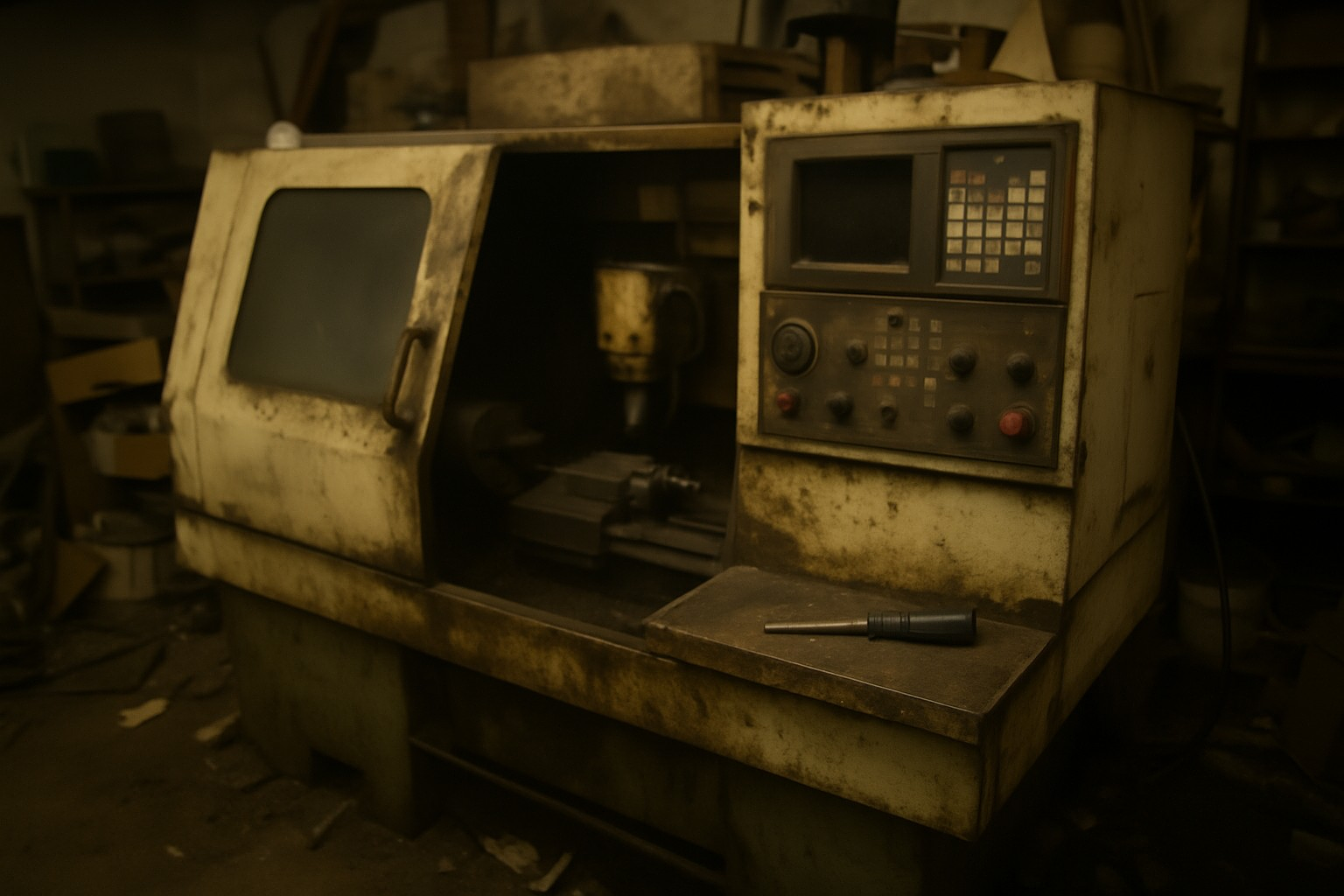I. Introduction: The Power of a Picture in Machine Sales
In the competitive market of used machinery, a picture is not just worth a thousand words; it can be worth thousands of dollars. High-quality photographs are the single most important element in an online listing for used equipment. They are the first impression a potential buyer has of your machine, and they play a crucial role in building trust and attracting serious inquiries. A well-photographed machine can sell faster and for a higher price than a comparable machine with poor-quality images.
This article will guide you through the best practices for photographing a machine you're selling. We will cover everything from preparing the machine and its environment to mastering the technical aspects of photography, such as lighting and composition. By following these tips, you can create a compelling visual presentation that will make your machine stand out from the competition and attract the right buyers.
II. Setting the Stage: Preparation is Key
Before you even pick up your camera, the most crucial step in photographing a machine for sale is preparation. A clean machine in a clean environment speaks volumes about its care and maintenance, instantly building trust with potential buyers. Conversely, a dirty machine in a cluttered space can deter buyers, suggesting neglect or hidden issues.
Clean the Machine
Remove all chips, scrap material, tooling, notes, charts, graphs, work orders, signs, pictures, and any other personal items from the machine. The goal is to make it look as close to its original factory condition as possible. If you have personal memorabilia or posters on the machine, remove them. The buyer wants to see the machine, not your personal effects.
Clean the Area
Just as important as cleaning the machine itself is cleaning its surroundings. Remove all carts, tables, toolboxes, boxes, and pallets that might obstruct a clear view of the machine or create visual clutter in your photos. Ensure there are no brooms or mops leaning against it, which could suggest the machine is no longer in use or has problems. A clean, uncluttered background ensures the buyer's focus remains solely on the machine.
Remove What You're Not Selling
If there are any tools, fixtures, vises, or other accessories that are not included with the sale of your machine, remove them from the photos. Buyers often assume everything they see in the pictures is part of the deal, even if it's stated otherwise in the listing description. This also applies to personal items like radios, TVs, or monitors that operators might have placed on top of controllers; these can sometimes give the impression that the machine's display is damaged, so it's best to remove them.
III. Mastering the Shot: Lighting, Angles, and Details
Once the machine and its environment are prepared, the next step is to capture compelling images that accurately represent its condition and features. This involves paying close attention to lighting, camera quality, composition, and detail.
Lighting
Lighting is paramount in machine photography. Natural daylight is often the best option, as it provides even, clear illumination. If photographing outdoors, position the machine in a clear area to avoid shadows from buildings or trees. If shooting indoors, maximize available light and consider using supplemental lighting, such as floodlights, positioned behind you as the photographer to illuminate the machine effectively. Avoid using flash directly on the camera, as it can create harsh shadows and reflections. If shooting in low light with a smartphone or camera, turn off the flash and use a timer with the camera placed on a stationary object to prevent blur from motion.
Here's an example of good lighting and a clean environment:

And here's an example of poor lighting and a cluttered environment:

Camera Quality
While professional cameras can yield exceptional results, a quality digital camera or even a modern smartphone can produce excellent photos. The key is clarity; clear photos give shoppers a better idea of the unit's condition.
Quantity and Angles
Take a large number of pictures from various angles. Images communicate more powerfully than written descriptions, so the more visual information you provide, the better you'll connect with buyers. Include wide shots that capture the entire machine, as well as close-ups of specific parts and components. Ensure you photograph the front, each side, the back, the corners, the top, and the undercarriage. If applicable, show the machine with and without attachments.
Key Details
Don't forget to capture critical details that buyers will want to see. This includes a clear photograph of the operating screen showing the hours of use, all voltage tags, and the machine's primary serial number. While accessories may have their own serial numbers, the main machine's serial number from the manufacturer is essential. If any tooling, manuals, spare parts, or accessories are included with the sale, photograph them as well; this demonstrates thoroughness and care.
Demonstrating Functionality
Buyers want to purchase functioning machinery. If possible, include photos of the machine in action. This could be an excavator with its boom extended, a tractor pulling a plow, or a forklift carrying cargo. These action shots prove that your equipment is in good working condition and can get the job done.
Interior and Exterior
While the exterior of the machine is an obvious subject, don’t overlook the interior, especially if it has a cab or operator’s station. Buyers will spend a lot of time here, so snap pictures of the seat, dashboard, controls, pedals, windows, and windshield.
Honesty about Damage
Transparency is key to building trust. If there is any scratch, dent, or other damage to the machinery, it’s important to include this in your written description and, crucially, in your photos. Hiding imperfections will only lead to disappointment and distrust from potential buyers.
IV. Beyond Photos: The Power of Video
While high-quality photos are essential, videos are becoming increasingly important in the online sale of machinery. A video can provide a dynamic, comprehensive view of the machine that static images cannot. It allows buyers to see the machine from all angles, observe its operational sounds, and witness its functionality in real-time.
The Increasing Importance of Video Demonstrations
Videos can be incredibly persuasive, often more so than photos alone. They offer a level of transparency and detail that builds immense confidence in potential buyers. Listings with videos tend to generate more interest and inquiries, as buyers can get a much better sense of the machine's condition and capabilities before even contacting the seller.
Tips for Creating Effective Machine Videos
- Show the Machine in Operation: The most impactful videos demonstrate the machine performing its intended functions. This could be an excavator digging, a lathe turning, or a forklift lifting.
- Walk-Arounds: Provide a smooth, steady walk-around of the entire machine, highlighting key features and any areas of interest.
- Control in Operation: Show the control panel and display in operation, if applicable.
- Duration: Aim for videos between 30 seconds and 2 minutes. This is long enough to show important details without being overly lengthy.
- Quality: Use a stable camera (a tripod is recommended) and ensure good lighting and clear audio. Avoid shaky footage or poor sound quality.
- Honesty: Just like with photos, be honest about any imperfections. It's better to show a minor dent in a video than to have a buyer discover it later and feel misled.
- Shareability: Be prepared to share large video files. Services like Dropbox, Google Drive, or iCloud are useful for this, as email attachments often have size limits.
If you are planning to decommission the machine, take the extra time to create detailed videos. This can save you from having to reinstall and power it back up for a curious buyer later on.
V. Conclusion: Maximizing Your Machine's Appeal
In the digital marketplace, the visual presentation of your machine is paramount. By meticulously preparing your equipment and its environment, mastering lighting and angles, and transparently showcasing every detail including any imperfections you significantly enhance your machine's appeal. Supplementing high-quality photographs with informative videos further strengthens your listing, providing potential buyers with a comprehensive and trustworthy view of what you're offering.
These best practices are not merely about taking pretty pictures; they are about building confidence and credibility with your audience. A well-photographed machine conveys professionalism, attention to detail, and honesty, all of which are crucial factors in securing a successful sale. By investing time and effort into your machine's visual presentation, you not only attract more serious buyers but also increase the likelihood of a faster sale at a better price. Make your machine shine, and watch your sales accelerate.
